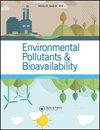Adsorption of Basic violet 16 from aqueous solutions by waste sugar beet pulp: kinetic, thermodynamic, and equilibrium isotherm studies
Q3 Chemical Engineering
引用次数: 13
Abstract
Waste sugar beet pulp has been used as adsorbent for the removal of a hazardous cationic dye, Basic violet 16, from its aqueous solution. Adsorption of the dye was studied as function of time, pH of the solution, dosage of the adsorbent, sieve size of the particles, concentration of the dye, and temperature. The initial pH of the dye solution did not affect the chemistry of the dye molecule and the surface of beet pulp. Langmuir and Freundlich adsorption isotherms were successfully employed, and on the basis of these models, the thermodynamic parameters were evaluated. Adsorption of Basic violet 16 on beet pulp was found to be an exothermic reaction. Time contact studies showed that more than 80% adsorption of the dye is achieved in less than 1 h. Kinetics investigations confirmed both pseudo-first-order and pseudo-second-order behaviors; on the other hand, it shows that the intraparticle diffusion step is not the only rate-controlling step in all concentrations.废甜菜浆从水溶液中吸附碱性紫16:动力学、热力学和平衡等温线研究
废甜菜纸浆被用作吸附剂,用于从其水溶液中去除有害的阳离子染料碱性紫16。考察了时间、溶液pH、吸附剂用量、颗粒粒度、染料浓度和温度对染料吸附性能的影响。染料溶液的初始pH值对染料分子的化学性质和甜菜浆表面没有影响。成功地采用了Langmuir和Freundlich吸附等温线,并在这些模型的基础上对热力学参数进行了评估。碱式紫16在甜菜浆上的吸附是一个放热反应。时间接触研究表明,在不到1 h的时间内,染料的吸附量超过80%。动力学研究证实了伪一级和伪二级行为;另一方面,它表明颗粒内扩散步骤不是所有浓度下唯一的速率控制步骤。
本文章由计算机程序翻译,如有差异,请以英文原文为准。
求助全文
约1分钟内获得全文
求助全文
来源期刊
CiteScore
1.62
自引率
0.00%
发文量
0
审稿时长
1 months
期刊介绍:
Chemical Speciation & Bioavailability ( CS&B) is a scholarly, peer-reviewed forum for insights on the chemical aspects of occurrence, distribution, transport, transformation, transfer, fate, and effects of substances in the environment and biota, and their impacts on the uptake of the substances by living organisms. Substances of interests include both beneficial and toxic ones, especially nutrients, heavy metals, persistent organic pollutants, and emerging contaminants, such as engineered nanomaterials, as well as pharmaceuticals and personal-care products as pollutants. It is the aim of this Journal to develop an international community of experienced colleagues to promote the research, discussion, review, and spread of information on chemical speciation and bioavailability, which is a topic of interest to researchers in many disciplines, including environmental, chemical, biological, food, medical, toxicology, and health sciences.
Key themes in the scope of the Journal include, but are not limited to, the following “6Ms”:
Methods for speciation analysis and the evaluation of bioavailability, especially the development, validation, and application of novel methods and techniques.
Media that sustain the processes of release, distribution, transformation, and transfer of chemical speciation; of particular interest are emerging contaminants, such as engineered nanomaterials, pharmaceuticals, and personal-care products.
Mobility of substance species in environment and biota, either spatially or temporally.
Matters that influence the chemical speciation and bioavailability, mainly environmentally relevant conditions.
Mechanisms that govern the transport, transformation, transfer, and fate of chemical speciation in the environment, and the biouptake of substances.
Models for the simulation of chemical speciation and bioavailability, and for the prediction of toxicity.
Chemical Speciation & Bioavailability is a fully open access journal. This means all submitted articles will, if accepted, be available for anyone to read, anywhere, at any time. immediately on publication. There are no charges for submission to this journal.

 求助内容:
求助内容: 应助结果提醒方式:
应助结果提醒方式:


